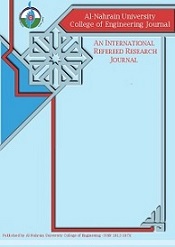Study the Effect of Cutting Conditions for turning process on the Machined Surface
Keywords:
surface roughens, cutting, condition, mathematical model, different, material,turning process, cutting speed, feed, rateAbstract
Surfaces quality is one of the most specified ustomer requirements for machine parts. The major indication of surfaces quality on machined parts is surface roughness. The research aim is to study the cutting conditions and their effects on the surface roughness. This paper utilizes regression models to predict surface roughness over the machining time for variety of cutting conditions in turning. In the experimental part for turning, different types of materials (Aluminum alloy, Copper alloy, and Gray cast iron) were considered with different cutting speed ( ) and feed rate ( ). A mathematical Model depending on
statistical-mathematical method between surface roughness (Rz ) and cutting condition ( , ) were derived, for the three materials. The matrix of test conditions included cutting speeds of the 16, 30, 45 and 60 m/min, feed rates of 0.17, 0.35 and 0.7 mm/rev while the depth of cut has been kept constant. The effect of
cutting parameters on surface roughness is evaluated and the optimum cutting condition for minimizing the surface roughness is determined. Mathematical model has been established between the cutting conditions and surface roughness using regression. The predicted values and measured values are fairly close, which indicates that the developed model can be effectively used to predict the surface roughness in the turning machining. As the results of this work, the mathematical models were used in predicting surface roughness, can be used in CAD-CAM manufacturing systems, this mathematical model helps engineer to reduce the efforts. Mathematical models shows that the decreasing in the feed rate resulted in better surface roughness and increasing cutting speed
resulted in better surface roughness. The goal of this work is to identify a relationship between experimental results and theoretical model, and study the proper process values for machining, to increasing the rates for raising the quality (better surface roughness).
Downloads
Downloads
Published
Issue
Section
License
The authors retain the copyright of their manuscript by submitting the work to this journal, and all open access articles are distributed under the terms of the Creative Commons Attribution-NonCommercial 4.0 International (CC-BY-NC 4.0), which permits use for any non-commercial purpose, distribution, and reproduction in any medium, provided that the original work is properly cited.









